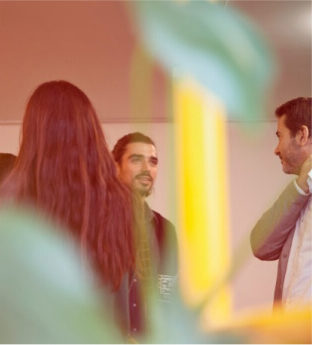Understanding the NFT Revolution in Traditional Galleries
A transformation is sweeping through traditional art spaces as digital art moves from the margins to the mainstream. What began as a niche intersection of technology and creativity has evolved into a full-fledged artistic movement, challenging galleries to reimagine not just what they display, but how they display it. This isn't just about NFTs – it's about the broader conversation of how traditional art spaces adapt to an increasingly digital art world.
The integration of digital art into conventional gallery settings represents more than a technological shift; it's a fundamental rethinking of what constitutes an art object and how we experience it. Leading institutions are discovering that successfully bridging the digital-physical divide requires both technical innovation and curatorial creativity.
The Hybrid Gallery Experience
Today's most innovative galleries are creating spaces that seamlessly blend physical and digital art experiences. High-resolution displays are being integrated into traditional gallery environments with the same consideration given to lighting and spacing as paintings and sculptures. These hybrid spaces allow for dynamic exhibitions that can shift between digital and physical works, creating dialogue between different mediums.
The challenge lies in maintaining the contemplative atmosphere of a traditional gallery while incorporating the interactive elements that digital art often demands. Successful spaces achieve this through careful design that treats technology as an artistic medium rather than a mere tool.
Curating the Intangible
Digital art curation requires a unique set of skills that combines traditional artistic knowledge with technical understanding. Curators must consider not just the aesthetic and conceptual aspects of works, but also their technological requirements and long-term preservation needs. This has led to the emergence of specialized digital curators who bridge the gap between art history and computer science.
The most successful digital exhibitions manage to maintain the gravitas of traditional gallery presentations while embracing the unique possibilities of digital media. This often means finding new ways to create the sense of uniqueness and presence that traditionally comes from physical art objects.
Conservation in the Digital Age
The preservation of digital art presents unique challenges that traditional conservation methods never had to address. Galleries are developing new protocols for maintaining and updating digital works, ensuring they remain accessible as technology evolves. This includes creating detailed documentation of hardware requirements, software dependencies, and intended display parameters.
Forward-thinking institutions are establishing digital conservation departments specifically focused on maintaining the integrity of code-based artworks for future generations. This involves both technical expertise and a deep understanding of artistic intent.
The Economics of Digital Art
Traditional galleries are adapting their business models to accommodate digital art sales. This goes beyond simply accepting cryptocurrency payments – it involves understanding new models of ownership, editioning, and value creation in the digital realm. Smart contracts and blockchain technology are becoming as important to gallery operations as condition reports and provenance documentation.
The most successful galleries in this space have found ways to create value propositions that combine the security and verification of blockchain technology with the traditional gallery roles of curation, authentication, and market-making.
Audience Engagement 2.0
Digital art allows for new forms of audience interaction that were impossible with traditional media. Galleries are experimenting with augmented reality, interactive installations, and participatory works that change based on viewer engagement. This has led to a reimagining of what audience engagement means in a gallery context.
The challenge lies in balancing these interactive elements with the contemplative atmosphere that makes galleries unique spaces for experiencing art. Successful venues create clear delineations between different types of engagement while maintaining a coherent overall experience.
The Future of Display
As display technology continues to evolve, galleries are investigating new ways to present digital art that moves beyond traditional screens. Experimental display technologies like holographic projections, light field displays, and transparent OLEDs are opening new possibilities for presenting digital works in three-dimensional space.
These technological advances are allowing digital art to become more sculptural and architectural, blurring the lines between physical and virtual space in exciting new ways. The gallery of the future might be one where the distinction between digital and physical art becomes increasingly meaningless.



